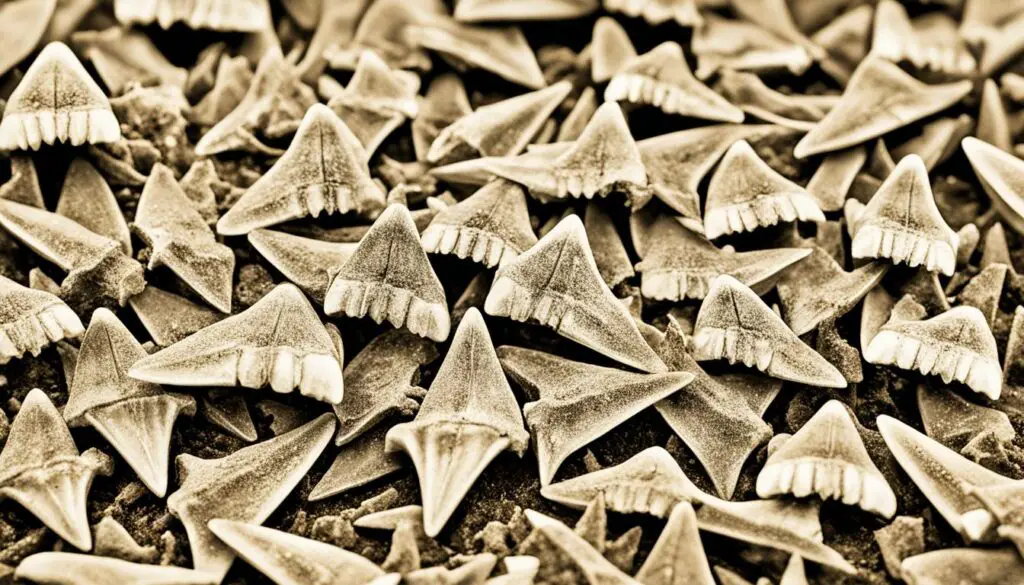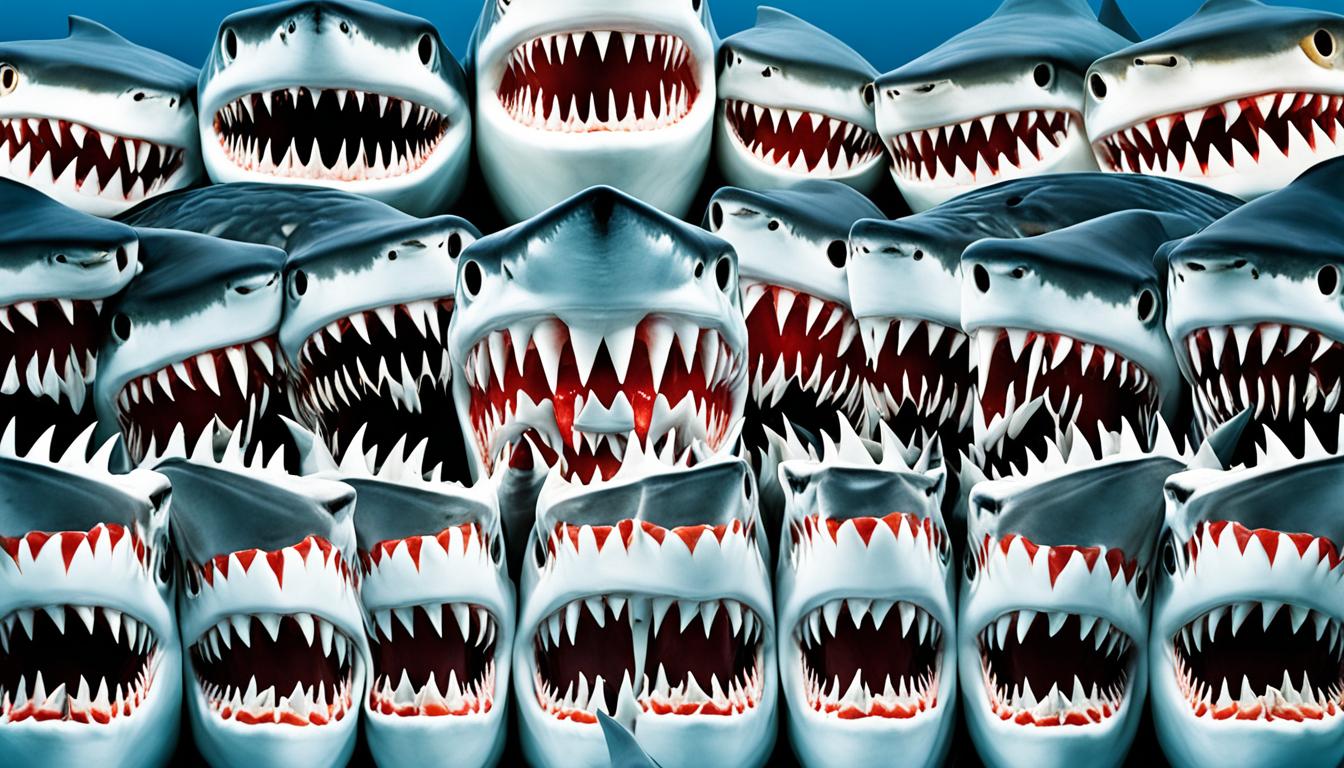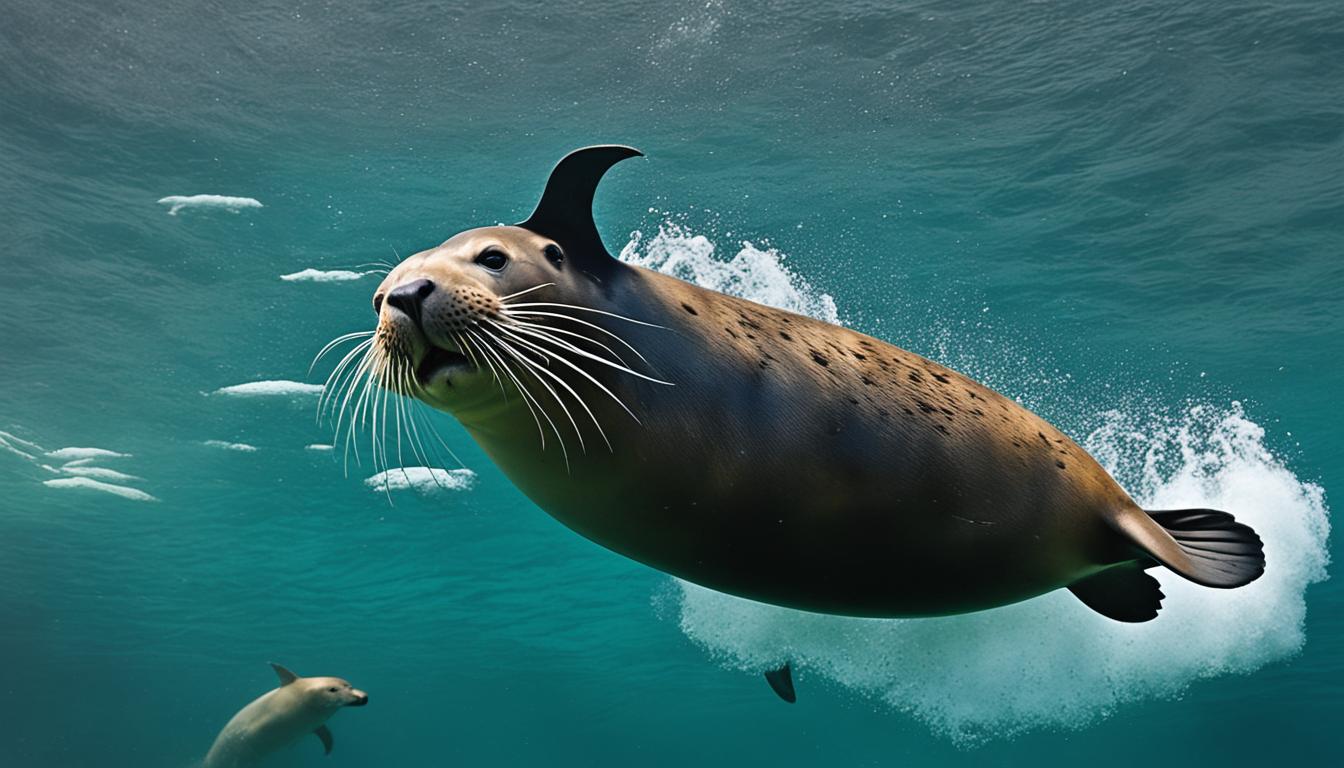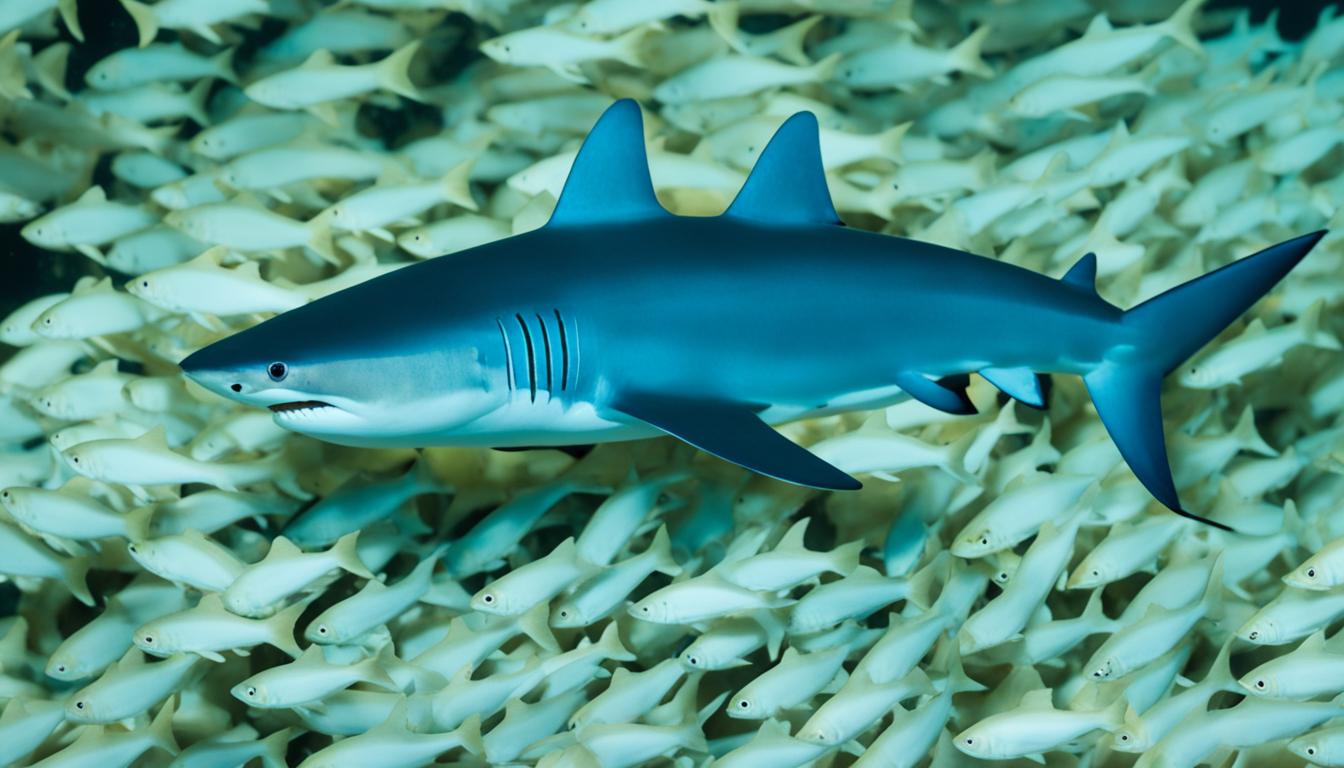Shark teeth are a fascinating part of their biology that often goes unnoticed. You might ask, how many teeth do sharks have? The answer varies among shark species, each with its own shark teeth count and dental structure. These are designed for their unique eating habits. This article explores the complexity and importance of shark teeth, tracing their evolution over millions of years. It also looks at the shark dental formula and how it affects their survival in the water.
Understanding Shark Dentition
Shark dentition is a fascinating topic that shows how these marine animals have adapted over millions of years. It helps us understand how they have thrived in different environments. Sharks have a history of nearly half a billion years, making them a great example of evolution, especially in their teeth.
The Evolution of Shark Teeth
Shark teeth have evolved to fit their hunting and eating habits. They have different tooth shapes and sizes for their diets. This has helped them live in various places and survive in changing environments.
Shark Teeth Composition
Shark teeth are made of a hard outer layer called enameloid and a softer core of dentine. This makes them strong for catching, cutting, and eating prey. Sharks have many rows of teeth that can be replaced, keeping them good at hunting throughout their lives.
How Many Teeth Do Sharks Have?
Sharks have a wide range of teeth, with the shark teeth count varying by species. Most sharks have between 50 to 300 teeth. Some species, however, have much more or fewer teeth. This variety helps us understand how sharks tooth evolution and their eating habits have changed over time.
The Average Tooth Count Across Species
The number of teeth in sharks can vary a lot. For instance, the lemon shark loses over 30,000 teeth in its lifetime. This shows how important it is for sharks to replace their teeth often. They can do this because they have a special way of making new teeth.
Notable Examples of Tooth Counts in Different Sharks
Many shark species have unique teeth.
| Shark Species | Average Tooth Count | Special Features |
|---|---|---|
| Great White Shark | Around 300 | Serrated edges for cutting |
| Frilled Shark | Approximately 300 | Backward-curved teeth for grasping |
| Lemon Shark | 50-300 | Continuous tooth replacement |
| Tiger Shark | Around 48-50 | Flat teeth for crushing prey |
Sharks have different teeth for different jobs in the ocean. These teeth show how sharks have changed over time. They help sharks eat in different ways, showing how their bodies are connected to their survival in the sea.
Shark Tooth Types and Functions
Shark teeth come in many types, each with its own role in hunting. They have evolved to help sharks eat different foods. This variety shows how sharks have adapted to their environments.
Serrated Teeth for Cutting Prey
Serrated teeth are a key type. Their jagged edges help sharks cut through flesh easily. Great white sharks use these teeth to quickly catch and eat their prey.
Needle-like Teeth for Grasping
Needle-like teeth are another important type. They are long and sharp, perfect for catching fish and squid. Bull sharks have these teeth to hold onto fast-moving prey.
Flat Teeth for Grinding and Crushing
Flat teeth are for grinding and crushing. Sharks like the nurse shark use them to open shells and eat the contents. This shows how different sharks have different teeth for their diets.
Shark Tooth Replacement Rate
Understanding how sharks replace their teeth is key to seeing how they keep up their hunting skills. Sharks can lose a lot of teeth but still keep their numbers high. This helps them survive in the water.
How Quickly Can Sharks Replace Lost Teeth?
Sharks can replace teeth fast, some in just 24 hours. They always have new teeth ready to go behind the old ones. When a tooth falls out, a new one moves up to take its place. This quick replacement helps sharks stay good at catching food.
Impact of Tooth Loss on Shark Survival
Sharks often lose teeth, sometimes as many as once a week. Losing teeth can make it harder for them to eat. Having many teeth is important for sharks to catch and eat their food well. Each tooth has a special job, so sharks need all their teeth to survive.
Sharks Tooth Evolution and Adaptation
The story of sharks tooth evolution is truly amazing. Sharks have been around for over 400 million years. During this time, they’ve changed a lot to fit their environments. Today, there are more than 500 shark species, each with teeth perfect for their way of eating.
Take the great white shark, for example. Its teeth are serrated, which helps it catch big fish. These teeth are sharp and jagged, making it easy to cut through flesh. On the other hand, the nurse shark has flat teeth for crushing shellfish. This shows how sharks have adapted their teeth to fit their diets.
Looking at these adaptations shows how complex shark teeth are. It also shows how sharks have become top predators in the ocean. By having specialized teeth, sharks can eat what they need to survive. This is key to their success in the marine world.
Shark Teeth in the Fossil Record
Shark teeth are very common in fossil finds because sharks are mostly made of cartilage. This cartilage breaks down quickly, making their teeth a key find for scientists.
When shark teeth get buried, they start to fossilize. Minerals replace the original material, helping these teeth last for millions of years. This process lets scientists learn about ancient marine life.
Looking at fossilized shark teeth tells us a lot about shark evolution. These fossils show what sharks ate and their roles in the ocean long ago. By studying their shapes and sizes, scientists can follow the history and changes of extinct sharks.

Exploring sharks tooth fossils takes you back in time. Each tooth piece adds to our knowledge of shark evolution. It shows how these amazing creatures changed over time, adapting to their surroundings and food.
Conclusion: The Significance of Shark Dentition
Studying shark teeth shows us how these predators have adapted over time. These teeth are key to their survival in the ocean. They play a big role in keeping the marine ecosystem balanced.
Learning about how many teeth sharks have and how they replace them is fascinating. Each tooth is vital for catching and eating prey. This shows how important shark teeth are for their survival.
As we learn more about shark teeth, we help protect these amazing creatures. By understanding their teeth and behavior, we can work to save their homes and themselves. This helps ensure sharks continue to exist for many years.









